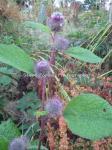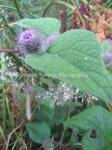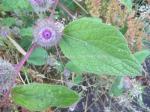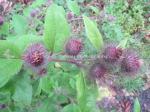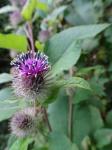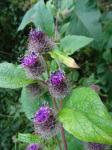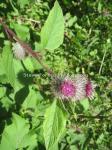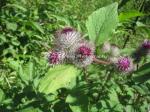Lesser Burdock
Arctium minus
Often known as burweed, louse-bur, common burdock, button-bur, cuckoo-button, or wild rhubarb, it is a biennial plant, native to Europe, but is now widespread throughout most of the United States. Lesser Burdock produces purple flowers in its second year of growth, from July to October. Outer bracts end in hooks that are like Velcro. After the flower head dries, the hooked bracts will attach to humans and animals in order to transport the entire seedhead
It can grow up to 1.5 metres tall and form multiple branches. It is large and bushy. Flowers are prickly and pink to lavender in colour. Flower heads are about 2 cm wide. The plant flowers from July through October. The flowers resemble and can be easily mistaken for thistles, but burdock can be distinguished by its extremely large (up to 50 cm) leaves and its hooked bracts. Leaves are long and ovate. Lower leaves are heart-shaped and have very wavy margins. Leaves are dark green above and woolly below. It grows an extremely deep taproot, up to 30 cm into the ground.
|

